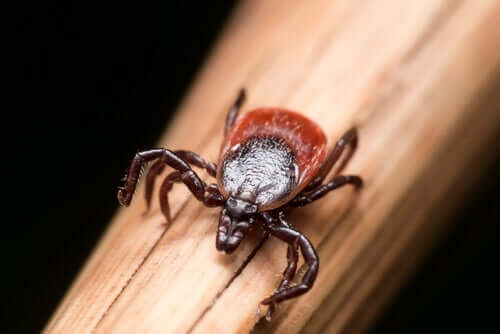Health Alert: Diseases Transmitted by Ticks

If you’re one of the many people who have a dog, or love doing things outside, then it’s worth learning about the diseases transmitted by ticks and what you can do to prevent them.
Ticks are one of the most universally-hated insects. They’re a type of hematophagous parasite, which basically means they feed on blood. Every single insect that feeds on blood is a potential danger because it may infect you or a pet with a disease. Our subject for today happens to be one of the most dangerous, up there with mosquitoes.
Some of their preferred victims include mammals, birds, and reptiles. They’re also all over the world. It’s easy for them to spread because you can have several on you for days without even realizing it. It can also be hard to find them on pets if they have long hair.
There are two basic types of ticks that are worth knowing the difference between soft ticks and hard ticks. The second kind is what you need to worry about, because they’re the main ones that you might find on you or a pet. One of the most common, the dog tick, is all over the USA.

Diseases transmitted by ticks
While a tick is feeding on your blood, it can infect you with microorganisms like viruses, bacteria or protozoans. These microorganisms are the main cause of health issues from a tick bite.
Here are some of the most common diseases transmitted by ticks:
Lyme disease
This disease comes from a bacteria called Borrelia burgdorferi. The species of tick that carries it is the Ixodes scapularis (or the deer tick) lives all over the US. If you have a tick bite and want to be sure you haven’t gotten Lyme disease as a result, you need to watch for a couple of weeks to see if a red bullseye appears around the bite.
If you catch it early, you can cure Lyme disease with antibiotics. While there’s no cure for later-stage Lyme disease, we can still treat and cure the symptoms. If left untreated, it can lead to arthritis or facial paralysis.
Ehrlichiosis
This can come from three types of bacteria a tick may be carrying. This is one of the most serious of all the diseases transmitted by ticks. The symptoms are similar to flu: fever, shivering, exhaustion, loss of appetite, nausea, vomiting…You can get rid of it in about a week or two with antibacterial medication.
Tularemia, or rabbit fever
This bacterial infection is very common in rodents. It tends to be transmitted by ticks, flies, and mosquitoes. Some of the most significant symptoms include shivering, head and muscle pain, trouble breathing, excessive sweating, and even weight loss.
If you’re worried that you or a family member has gotten it, you’ll have to go to a doctor and get blood cultures, blood tests, and a chest X-ray. With treatment, only about 1% of cases are fatal.
Other diseases transmitted by ticks
There’s an endless list of other diseases transmitted by ticks. Some of the other big ones are things like babesiosis, Rocky Mountain spider fever, and rickettsial infections.
How to prevent tick bites
If you have children or pets, it’s more than likely that one of these parasites will make its way into your home. They tend to hide in places we don’t tend to look for. Here’s how to minimize your family’s risk of tick bites:
- Avoid areas with tall plants, especially brush and grass. It’s always safer to walk down established paths free of vegetation.
- Use insect repellents. A tick might find its way onto you, but the smell of the chemicals will make it go away without biting.

- Avoid damp, shady areas. Whether in a forest, or your backyard, it’s best to stick to the drier areas more exposed to the sun when you want to be outside. Try to make sure your kids play only in these areas when they’re outside.
- Daily inspection: if you’ve spent the day outside in nature, everyone needs to do a spot check on their body. You also need to check your dog, and the clothes you were wearing. If you find a tick, remove it carefully to avoid any legs from staying in the bite.
All cited sources were thoroughly reviewed by our team to ensure their quality, reliability, currency, and validity. The bibliography of this article was considered reliable and of academic or scientific accuracy.
Medlineplus. Picaduras de garrapatas. 8 abril 2019.
- medlineplus.gov/spanish/tickbites.html#cat_93
Scielo. Espectro de las enfermedades transmitidas por garrapatas. Hospital San Pedro-Centro de Investigación Biomédica de La Rioja.
- http://scielo.isciii.es/scielo.php?script=sci_arttext&pid=S1139-76322016000500008
Healthychildren.
Enfermedades transmitidas por garrapatas: ehrlichiosis humana. 2018.
- healthychildren.org/Spanish/health-issues/conditions/from-insects-animals/Paginas/Illness-from-Ticks-Human-Ehrlichioses.aspx
This text is provided for informational purposes only and does not replace consultation with a professional. If in doubt, consult your specialist.